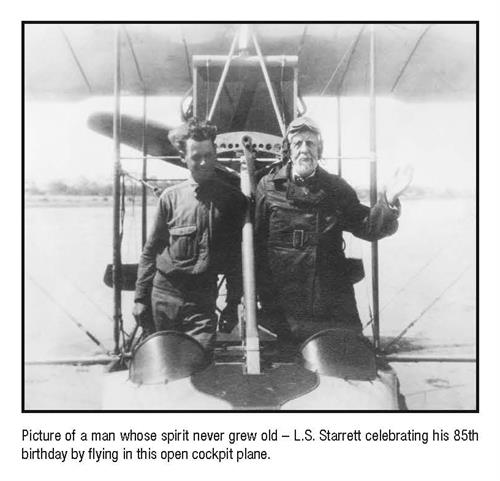HOW THE BUSINESS BEGAN
Like all businesses, however large or complex, this one started with a man and an idea. The man was Laroy S. Starrett; his idea was "to invent something useful that people would want." Countless others have had a similar idea, the difference here was in the quality of the man. L.S. Starrett's outstanding characteristic was confidence in himself; he was a man who in spite of one setback after another refused to admit defeat. He had unusual ability, vision and enterprise, but without his high courage this story of the foundation and growth of "the world's greatest toolmakers" could never have been written.
L.S. Starrett, like so many of the early captains of industry, had his roots in the soil. His boyhood in China, Maine, was typical of American farm life one hundred years ago. The family was clothed by the wool and flax raised on the farm; one of Mr. Starrett's earliest recollections was sitting under the loom and picking up the shuttle which occasionally dropped from the hand of his mother as she was weaving cloth for their garments. As he grew older he took his place with the men in the fields. At fourteen he was trusted to drive loads of cordwood drawn by oxen to Augusta, twelve miles away. Looking back on this 17-hour round trip – often in zero degree weather – he wrote, "It seems tough to think of it now but I did not mind it then."
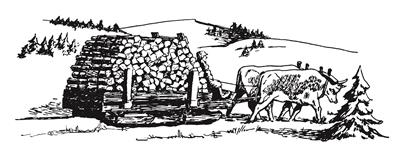
Even as a small boy L.S. Starrett was fascinated by tools. Better than anything else he liked to be making something useful in what spare time he had. His father helped him get a saw, plane and a few chisels; when he went to a nearby auction and bid on a draw shave and auger bit set he was the proudest boy in the countryside. This was the first money he ever had to spend and in later years he often said it was the best trade he ever made.
The Starretts were a large family; with twelve children to bring up it was a struggle to make both ends meet. Over-hearing that his father had gotten in debt and the farm would have to be mortgaged as security, Laroy left the homestead and "hired out" at the age of seventeen. For several years he turned in his earnings until the mortgage was paid off. He used to say that this gave him greater pleasure than putting the money in a bank and taught him the economy he believed was essential to success.
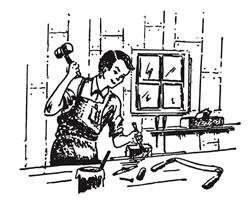
His first job was on a milk farm. Greater responsibilities and more money followed and by the time he was twenty-six he was able to rent a 600 acre farm in Newburyport, Massachusetts. Never one to follow tradition blindly, he soon had the local farmers shaking their heads at the "reckless" methods of the newcomer. Against their well meaning advice he put in crops they said could not be grown in that section – and came up with bumper yields. His ideas of planting and cultivating often went against all precedent – but they brought him top prices and blue ribbons at the agricultural shows. He bought the first mowing machine used in that part of the country – and soon paid for it by mowing for his conservative neighbors after his own hay was in. Whether running a farm, inventing a tool or organizing a business, L.S. Starrett always looked for a better way.
Skeptical neighbors were finally convinced that young Starrett knew what he was doing and before long would have a farm of his own. But he himself had different ideas. He had what he called "invention on the brain" and it wasn't to be sidetracked. In winter and on stormy days much of his time had been spent in a room over the stable which he had fitted up as a workshop. Here he developed his first invention, a meat chopping machine. While he was without experience in manufacturing he had great faith in this chopper and his ability to succeed with it. When the working model was finally perfected he sold out his farming interests and turned to business.
Getting the chopper on the market was a struggle that made farming look easy in retrospect. Everything was new and he had to learn as he went along.
Always ready to listen and profit by the experience of others, L.S. Starrett proved an apt pupil. By watching his pattern-maker he discovered what was needed in a pattern to make a good casting. When – as frequently happened – his machinist tried to impress him with his knowledge, Mr. Starrett quietly absorbed it all. He hired a room that would suit his purpose, fitted it up with shafting, machinery and fixtures and began turning out his choppers.
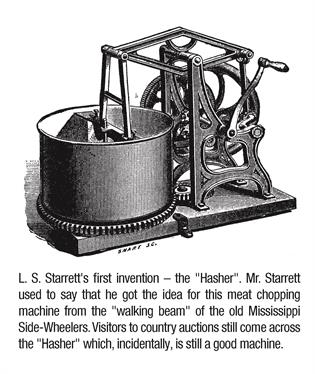
But he kept going. He brought in a silent partner who put in some money. By selling sales rights in different countries he was able to devote more of his time to manufacturing. The business grew and eventually he began looking around for a new location: a place where he could get water power and more capital. On this errand he met a business man from Athol, Massachusetts, who warmly recommended his home town as a likely place.
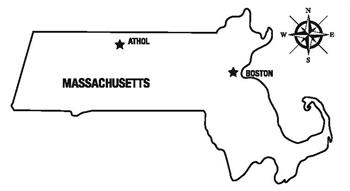
Mr. Starrett visited Athol, was impressed by what it had to offer and moved there as quickly as he could. Associating himself with the Athol Machine Company (which he would purchase in 1905), he soon had the meat chopper business running smoothly and turned his inventive genius to other products. Among the patents taken out by Mr. Starrett (eventually about one hundred) was a line of bench vises and a shoe hook-fastener which later was universally used. This alone was capable of bringing its inventor an independent fortune had he himself developed it. Instead, Mr. Starrett regarded the hook-fastener as an item of secondary importance in the light of his keen interest in the development of precision tools and kindred items, and sold it for a few hundred dollars.
The next few years were critical. Laroy Starrett was working harder than ever. His new products were going ahead satisfactorily. Nevertheless, as he approached forty he felt he was not making the progress he should. "I was unable to make much of a success in a business way until I left the Athol Machine Company and started in for myself," wrote Mr. Starrett in "Essentials to Success." But the circumstances that brought this about were not of his own choosing!
THE FIRST STARRETT TOOL
Misfortunes that would have halted a less courageous man befell Mr. Starrett. His wife died, leaving him with four small children to care for. He lost his hearing. His association with the Athol Machine Company had not been happy and through jealous rivalry he lost his position. To make matters worse, all the money he had was tied up in the stock of this company which, in the meantime, continued to capitalize on his inventions. Even so, the confidence in his fellow man and the faith in God which sustained him throughout his long life and to which he attributed his success, remained unshaken. But let him tell how he overcame all obstacles in his own simple words:
"I saw no other way but to try to create a business for myself by inventing something useful that people would want."
"I had worked at pattern making and used clumsy, fixed-blade try squares. I realized the need of a more handy instrument, gave the subject careful study and drew a design that pleased me, and made patterns of it, sitting at the kitchen table night after night until the small hours."
"I secured a foot lathe for my room and after I had made patterns, got castings and a blade for my combination square and took them to a nearby machine shop, engaged the best workman and stood by for two days until he got finished. The man was an expert toolmaker so when it was finished I asked: 'Well, what do you think of it?' He said: 'I would not give a damn for it.' But that did not discourage me. I knew his reason. He believed that the sliding blade in a square stock could not be ground sufficiently accurate to be depended upon, the difficulty being the then almost impossible task of grinding a perfect straight edge to form the blade, due to the heat generated in grinding. I believed the difficulty could be overcome, and it was, so that we were finally able to guarantee our squares standard for accuracy and they are so accepted the world over."

WHERE THE FIRST "STARRETTS" WERE MADE
Once Mr. Starrett had solved the problem of grinding a perfect straight edge he set about getting his new invention on the market. His first move was to find a company that could produce the squares in quantity. He was successful in this and after making up samples placed a contract for five thousand squares. He financed this by borrowing from a bank in Newburyport, Massachusetts, where he was well known.
But when Mr. Starrett was ready to take orders he found the hardware trade reluctant to invest in any stock!
"They told me that while the square was a good thing there was no call for it as it had not been introduced; that if I would work up a demand for it they would put in a stock. I took the hint and hired several men to take orders allowing them a liberal commission on all they could sell. This scheme proved a success and they sold like hot cakes. In fact, so successful was the introduction that the trade called for the squares before I was able to supply them and some were quite impatient because they had to wait."
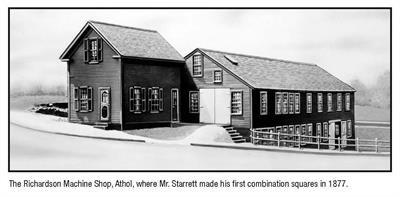
By this time the New Britain company that was making the combination square on contract found it was seriously cutting into its own business in fixed-blade squares and a situation developed that led Mr. Starrett to make other arrangements. Going back to the "nearby machine shop" that had made his first model, he contracted with the proprietors to make the squares at an agreed price while he continued to buy the blades from the original source, regrinding the edges.
All went well for a while, so well that Mr. Starrett's former associates in the Athol Machine Company cast envious looks at his prospering new venture. They offered him full control if he would come back. When this failed they brought suit against him and threatened ruin to all who had anything to do with making or selling the combination squares. This frightened the proprietors of the shop where the new tool was being produced.
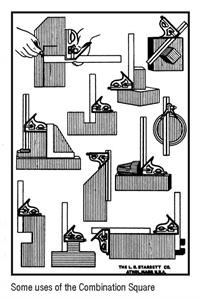
"They stopped work in spite of all I could say or do to assure them that the Athol Machine Company was wrong and infringing my patents and that I was able to protect them and myself and would. But they lacked faith and courage to go ahead."
"They said they were not going to run the risk of losing everything they had. I asked, 'Are you willing to sell out?' "Yes, we'll be glad to sell', they said. I bought them out, hired their help and kept right on doing business in the old shop more profitably than ever. Meanwhile I brought a countersuit against the managers of the Athol Machine Company and after a fight got an injunction obliging them to pay costs and damages."
By 1881 Mr. Starrett had to have larger quarters and moved to a frame building across the Millers River. As early as 1882 he went abroad and established selling connections in London and Paris. In the years that followed, facilities and personnel were doubled several times, new brick buildings were erected on both sides of the river and The L.S. Starrett Company began to take shape as one of Athol's leading industries.
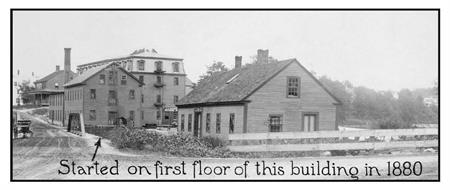
THE FIRST STARRETT CATALOG
Mr. Starrett's new square was described in a simple illustrated leaflet. The immediate popularity of the new tool proved Mr. Starrett right when he predicted it would "knock out the old time square". But he did not stop there. Typical of his zeal for improvement – even of his own inventions – was his still further expansion of the utility of this remarkable tool:
"Next I conceived and made the center head (for finding the center of a circle) to slip off and on the blade in place of the regular miter head with level and scriber. Then I made a bevel protractor to go off and on the same blade, all of which proved to be exactly what mechanics were in need of."
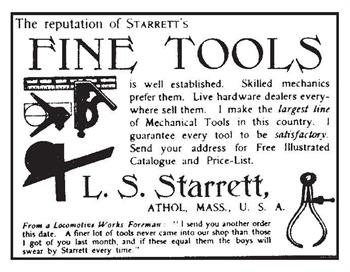
STARRETT STEEL RULES AND TAPES
Difficulties in obtaining square blades that were ground and graduated with sufficient accuracy forced Mr. Starrett to build machines of his own design to do the work and he soon found himself the master of this art. He explains how this led him into the making of steel rules:
"Not only did we make a superior square blade but took up the making of a full line of spring tempered rules. Among these was a very thin watch spring tempered rule which I termed 'flexible' to distinguish it from those made of heavier stock. When I put my line on the market they proved so superior to the thick, heavy, soft rules being made by others that it was easy to get the trade."
This led into the manufacture of steel tapes upon which many improvements were made in marking for easy reading and convenience. When Mr. Starrett saw an engineer using a steel tape, he liked to ask to see it. If he saw it was one of his tapes, Mr. Starrett would say, "That's all right, if you use tapes with Starrett's name on them you will make no mistake." Starrett tapes have been even more improved since those days by special finishes, special graduations, cases and reels for specific uses. But there is no improving on Mr. Starrett's advice, given with a chuckle but sincerely meant, "If you use Starrett tapes you will make no mistake!"
In 1986, The Evans Rule Company joined the Starrett Company, adding an extensive product offering of short line tapes to the Starrett line of measuring tools. Since then Starrett has evolved such innovative products as the Pro-Site® CP505A-12 combination protractor and the "Hidden Edge®" utility knife.
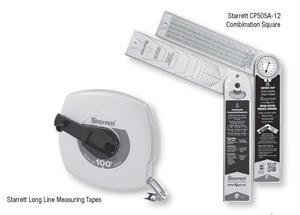
FAY CALIPERS AND DIVIDERS CAME NEXT
It was characteristic of Mr. Starrett that he was as quick to recognize the worth of a tool made by another as one invented by himself. The Starrett catalog today lists many tools which originally were taken over by Starrett, improved and developed to meet new uses. A typical example is in the caliper and divider group which now numbers scores of different types and sizes. Mr. Starrett tells how it began:
"In 1887, having bought the stock, machinery and patents belonging to Mr. Charles P. Fay, I added a very important branch to my business, via a line of spring bowed calipers and dividers with a detachable fulcrum stud. Mr. Fay had been industriously at work for about three years in Springfield, Massachusetts, developing his patents. These proved to be superior to anything in this line and quickly drove out all the imported makes which up to then had controlled the home market. Consequently I soon had a clear field with a reputation and business in this line to be proud of. Mr. Fay came with the business and was with me for several years. He was one of the most expert and ingenious mechanics I ever employed."
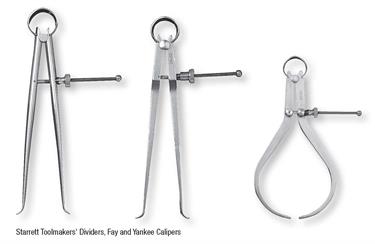
THE STARRETT MICROMETER
Mr. Starrett's inventive genius next turned to the micrometer, a tool originated and manufactured in France. Again let us use his own words:
"The first one I ever had was rather crude and I at once saw that improvements were needed. There was too much stock in the anvil head which prevented it from being used in certain places. The screw threads were not covered, the adjustment too slow. There was no locking device for screw or spindle which was needed to cause a close fit or to lock it firmly to preserve its setting. I decided to improve it and put on the market a micrometer of my own make. I reduced the stock around the anvil, making a neater appearance. I attached a small, knurled thumb piece 'speeder' to the screw to rotate between the thumb and finger to speed it up and cause the more sensitive adjustment; I adopted a covered screw; I put a split bushing in the hub around the spindle and a hollow, knurled adjusting nut to telescope it to either cause a close fit around the spindle or lock it firmly to preserve its setting."
"Still, I was never satisfied with the slow adjustments of the micrometer screw, which requires forty revolutions to open or close one inch. I therefore gave serious study to devising a micrometer that would be absolutely accurate and capable of being adjusted instantly to its work within the range of its screw. It gave me much pleasure to accomplish this to my entire satisfaction."
"The principle of this quick adjustment consists of a thimble, connected with a spring plunger which slips over the end of a long, split nut, which automatically closes as quickly as pressure on the plunger is removed. The threaded screw is buttress-shaped with straight lip to resist back-thrust, insuring accuracy."
From these early micrometers the Starrett line has grown to hundreds of different styles and sizes. Starrett micrometers are available in English measurements and metric. The Starrett line now includes regular micrometers and both mechanical and electronic readout micrometers.
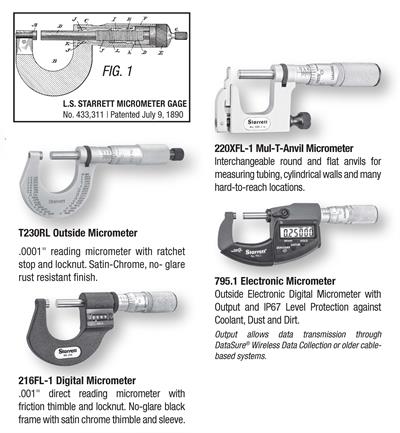
FURTHER EXPANSION
From 1883 on, the line of tools steadily broadened. Calipers, squares and similar tools logically followed the mastery which the company had attained on the graduating of scales. The process of engraving and etching the graduations on hardened steel were developed by Mr. Starrett. Buildings and machinery were constantly added. In 1894 a large addition to the factory was made and in 1904 a large power house was erected. The same power plant is still in use housing the latest technology to provide heat and produce steam required by many departments within the complex. This provides an interesting example of the character and business sagacity of Mr. Starrett. A serious depression took place in 1904. It was a year of free soup kitchens for the unemployed, so great was the general decline in business. But Mr. Starrett believed in looking ahead. He foresaw an inevitable boom in business following the slump. In his own words he "jumped in all the harder". Consequently, he was prepared when the tide turned. Mr. Starrett at this time bought out a small plant in Providence manufacturing formed milling cutters and moved it to Athol. The rapid growth of the tool business soon claimed his entire attention, however, so that he assisted others in taking over this cutter business which later developed into the Union Twist Drill Company of Athol. A cotton mill adjoining the Starrett factory burned down. Its site was acquired and in 1902 a new building of more than twice the floor space of the old plant was erected.
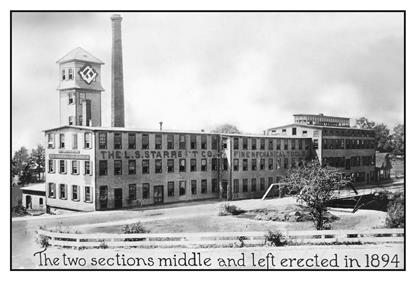
1887 - STARRETT STALWARTS OF AN EARLIER DAY
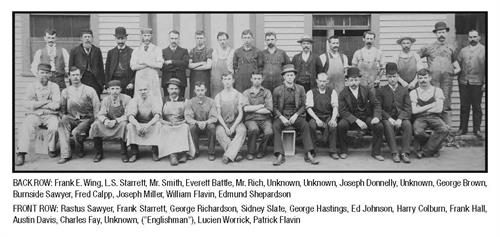
Here they are . . . the men who made the first Starrett tools taking time off to back up against the "old shop" and pose for a local photographer. We smile at this quaint picture taken so long ago that many of those portrayed cannot now be identified. But all honor to them! That variety of headgear reflects their rugged individuality, those determined looks speak for the never-say-die spirit that carried the early Starrett organization over every obstacle.
Here and there we can pick out a familiar figure. The frock coated gentleman wearing a skull cap who stands in the back row is L.S. Starrett. On his right is Frank E. Wing, then Treasurer of the company. Sitting directly in front of L.S. Starrett is his son, Frank, father of Arthur H. Starrett, President of the company from 1946 to 1962, and great grandfather of Douglas A. Starrett, our present President/CEO. Superintendent Shepardson, better known as "Shep", stands at the other end of the row. Fourth from the right, sitting modestly in the front row with hands on knees is Charles Fay, inventor of the famous Starrett Fay Calipers and Dividers. Also in the front row is George Hastings, father of A.E. Hastings, retired Treasurer. He sits fifth from the left under a rakish straw hat, handlebar mustache and long white apron.
"To our faithful employees," wrote Mr. Starrett many years after this photograph was taken, "belongs a large share of the credit for our rapid growth and great success." This statement is just as true today. The frame building has been replaced with modern structures of brick and steel. The number of workers has been expanded more than fifty fold. But the Starrett reputation still depends on those who design and make Starrett Tools. If you could visit us here at Athol, we think you'd agree it could not be in better hands!
STARRETT INITIATES DEVELOPMENT OF HACKSAWS THAT "CUT QUICKER - LAST LONGER"
Quite early in the days of adding to his tool lines and facilities, Mr. Starrett realized that the hacksaw as a cutting tool was as important to efficient shop practice as any other tool. He studied what the market offered, then characteristically set out on his own course. Here's how he describes it:
"We began to experiment in the manufacture of hacksaw blades adopting the process used by other manufacturers. This produced a blade of fair quality but not satisfactory to us. After giving the matter serious thought, we abandoned the old process. We built a special fireproof addition connected with our plant, equipped it with tempering and hardening devices of our own devising, built special automatic cutting-up and teeth-setting machines and applied exhaustive tests to learn the best quality of steel needed for hacksaw blades. We got it and the quality of our saws has become so well known by all who use them that we are over-taxed to keep up with our orders."
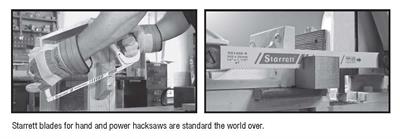
A hacksaw blade may look simple to the uninitiated, actually few tools call for as much manufacturing "know-how". The stock goes through a dozen critical processes calling for the best of equipment, highly skilled operators and many tests for each individual blade – tooth set, cutting edges, hardness and uniformity. Starrett leadership in this field, built on its original process and equipment, has been maintained by rigid control of quality at every production step.
Carrying on the Starrett tradition of innovation the company focused major resources into the development of a new saw technology. This resulted in our new bi-metal unique® saw blade technology that produces stronger blades, faster cutting and longer blade life. In addition to hacksaw and jig saw blades, the technology is now available on a new line of portable band saw blades that fit a variety of machines including Black & Decker, Greenlee, Porter-Cable, Rockwell and more.
Bi-metal unique® technology joins two strips of high-speed steel wires to a backing steel in a solid phase, using the principle of solid-state diffusion bonding. Bi-metal unique® technology is totally different from traditional weld or laser bonding which rely on metal fusion as the union agent at the interface. The same technology was applied to our recently developed Unified Shank® jig saw blades that fit both universal shank and Bosch shank jig saws. This new technology gives both of these bi-metal products 170% more weld contact area than conventional bi-metal products. Further, the teeth now have four cutting edges rather than two and they produce dual chips that are easily removed from the cut, referred to as the Split Chip Advantage®.
The Primalloy™ Band Saw product line applies a proprietary Extended Life Treatment (EXT) to its alloy steel backing material. This process, in addition to controlled blast peening, enhances the fatigue life of the blade. The EXT applied during the peening operation adds increased residual stress into the surface of the blade. Higher stress levels aid in the reduction of fatigue cracks that originate along microscopic grain boundaries. The benefits of extended life treatment are proven with X-Ray Diffraction (XRD) and extensive mechanical fatigue tests. This process will soon be applied to most Starrett bi-metal and carbide tip product lines.
In quick succession after World War II there was the depression in 1949, immediately followed by the Korean War, then a period of relative stability, followed by the Vietnam Conflict, followed by the prosperous years of the '80's leading up to the 1991 "Desert Storm" endeavor. Starrett expanded starting with a modern post-World War II building devoted to the manufacture of hacksaw and band saw blades. This building was expanded five times through 1987 because of increasing sales of hacksaws and band saws and also the introduction of many new saw products such as hole saws, jig and reciprocating saws.
Finally, in order to get much needed room for tool production in Athol and still more space for saw production, a completely new band saw facility was built in Mt. Airy, North Carolina in 1991.

THE STARRETT STANDARD OF ACCURACY IS APPLIED TO DIAL INDICATOR GAGES
No part of the Starrett line has grown more rapidly in recent years than the Dial Gages. Starting in 1920 with the first indicator (designed to check curvature in spectacles), 75 years later their number has increased to over one hundred different instruments including the flexible Last Word® Indicator so popular with mechanics and machinists. Indispensable in tool and machine work calling for repetitive checking and inspection, Starrett Dial Indicators and Gages are universally used. The Starrett mechanical dial indicator gage line has been enhanced by the addition of electronic indicators with output for use in statistical process control. Many new gages have been developed to meet special needs and with the various attachments for use with machines, jigs and fixtures, Starrett offers an unequalled selection to those who want quick, accurate readings and dependable service.
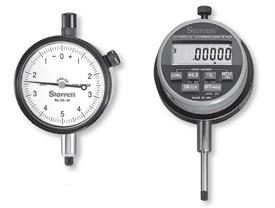
It has been fortunate for war industries that this diversified line of dial indicator gages has been available. In all wars, the unprecedented demand for these tools taxed even Starrett resources.
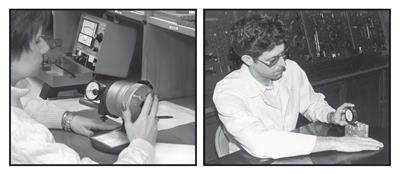
NEW STARRETT TOOLS
One interesting item in the expanding Starrett line is Precision Ground Flat Stock. This is tool steel specially made and annealed to our specifications, and ground to extremely fine tolerances. It is made in a variety of sizes and packaged for the convenience of the machinist making his own special gages and test tools. It is also widely used for production of parts in industry generally. In addition to Ground Flat Stock, Starrett now offers oil, air and water hardening drill rod.
Following World War II the Company resumed its program of new tool development on a much larger scale. In 1946, spacious new quarters were provided and equipped solely for engineering and experimental work. Out of this expanded department has come a continuous stream of additions to the Starrett line; new tools developed, standard numbers improved. These include Electronic Gages; Micrometers of many new types - Hi-Precision, Mul-T-Anvil, V-Anvil, Disc Type and Blade Type Outside Micrometers; Digital Reading Micrometers both mechanical and electronic; Internal Groove Micrometers; Micrometer Heads of various types and sizes; Master Vernier Calipers and Height Gages; Satin Chrome Rules; a new line of High Precision Dial Indicators and Electronic Indicators featuring interchangeable design; new Dial Gages of many types including Bore, Diameter, Groove and Snap Gages; and a new line of Satin-Chrome and White Steel Tapes. Special Gages of all types are now available from the Special Gage Division.
Also, in the 1980s, as measuring equipment evolved into electronic measuring, Starrett expanded its line of electronic equipment from comparative-reading electronic gages to direct-measuring type gages.
During the 1990s, Starrett continued to broaden its indicator product line with the introduction of a series of new test indicators with dovetail mounts.
The new millennium saw the introduction of many new electronic products. Two new height gages known as Altissimo®, with an ergonomic base and user-friendly display, were added to the catalog. Also joining the Starrett family were a group of portable measuring devices including a new Gage Amplifier, Surface Roughness Tester, two versions of Hardness Testers, Tachometer, and Digital Durometer. Three new bench-top Hardness Testers, both digital and analog were also added to the product line.
Broading our line of electronic tools is the 798 Electronic Caliper that provides an IP67 level of protection against foreign matter in hostile shop environments. In addition to being coolant and water resistant, the caliper offers excellent protection against chips, dirt, dust and other contaminants.
The latest addition to our line is DataSure® a wireless data collection system that gathers data from electronic measuring tools and delivers it to a PC.
Our expanded 795.1 and 796.1 Micrometer offering now includes measuring ranges up to 4" (100mm). All are IP67 protected against coolant, water, chips, dirt and dust. The 795.1 series is equipped with an RS232 output port and is ideal for use with DataSure® Wireless Data Collection Systems.
The 2900 Electronic Indicators are available in a choice of configurations to meet a range of requirements. Innovative True Absolute Sensor Technology minimizes the chance of data loss for exceptional reliability. Built with IP67 protection and customary Starrett quality, they maintain their reliability in hostile shop environments.
NEW SUBSIDIARIES AND DIVISIONS
International expansion began in 1956 and 1958 with the addition of two new factories in Sao Paulo, Brazil and Jedburgh, Scotland. Both of these plants were started to satisfy the existing demand for Starrett saw products worldwide. These subsidiaries were responsible for the expansion and spread of the Starrett brand name throughout South America, Europe, and Asia. In 1962, The Webber Gage Co., the proven champion for over 50 years in the manufacturing of precision gage blocks, with its staff of specialists, joined the Starrett family. The combined talents of these two accomplished gage-making companies have become increasingly important to quality control specialists in industry. The Starrett Webber Gage Division is housed in a facility in Cleveland, OH.
In 1970, The L.S. Starrett Company acquired the Herman Stone Co. of Dayton, OH, a manufacturer of granite surface plates. The Granite Surface Plate Division moved to Mt. Airy, NC in 1972. Crystal Pink granite surface plates have the most wear-resistant surfaces and maintain their accuracy longer than competitive materials.
The Evans Rule Company based in Charleston, SC joined the growing corporate structure in 1986. The extensive Evans product offering of short-line tapes and accessories formed the basis for Starrett to enter the consumer market, as well as adding to the line of measuring tools offered to the industrial market.
In 1990, Starrett purchased the total assets of Sigma Optical, a United Kingdom firm which designs and manufactures optical measuring projectors, and formed the Starrett Precision Optical Division.
In 2002, Starrett introduced its new line of video based measuring systems. These systems are available as both manual and CNC driven machines in two basic ranges and are widely used in the medical field, electronics manufacturing and the computer industry.
In 2006, Starrett acquired the assets of Tru-Stone Technologies, Inc., based in Waite Park, Minnesota. Tru-Stone is the world leader in providing high precision, custom engineered machine bases and accessories to leading manufacturers of inspection and measurement equipment, and services a number of industries, including the semiconductor, flat panel display, advanced microelectronics, aerospace, automotive, medical, optical, and general industrial.
In 2007, Starrett acquired Kinemetric Engineering, LLC. Based in Laguna Hills, California, Kinemetric Engineering specializes in precision video-based metrology, specialty motion devices, and custom engineered systems for measurement and inspection. A long-time technical partner of Starrett, Kinemetric is responsible for the global sales and support of both the company's line of Starrett optical projectors and their vision-based equipment. This integration provides a comprehensive product offering and broadens Starrett's custom engineered solutions for industry.
In 2011, acquired Bytewise Development Corporation, based in Columbus, Georgia. Bytewise designs, develops and manufactures non-contact, industrial measurement systems and software that capture the external geometric profile of a product and analyze that data to meet measurement and/or quality control requirements.
This picture typifies the Starrett "family" approach to precision gaging. A height dimension is built up by wringing Starrett-Webber gage blocks together. The blocks are staged on a Starrett Crystal Pink granite surface plate, and the height dimension is transferred to the work by a Starrett high magnification electronic gage for comparison measurement. Starrett-Webber laboratory master gage blocks are accurate to +.000001" for the decimal system and +0.000027mm for the metric system.
STARRETT PIONEERS BETTER KNOWLEDGE AND USE OF FINE TOOLS
No company has done more than Starrett to encourage higher standards of workmanship throughout industry. Starrett not only has produced fine tools since 1880, it has consistently promoted in every way possible their more effective use. One way is through the Starrett catalog, standby of all who use hand measuring tools and precision instruments. Now in its 33rd edition, the 580 page book is a gold mine of information. Starrett tools are illustrated and described, their uses are explained and fifteen pages of useful charts and tables are included for handy reference. Another way is through the famous "Starrett Book for Student Machinists". They are known and used everywhere, have run through scores of editions and hundreds of thousands of copies. The use of Starrett tools in specific fields is the subject of the booklet "Tools and Rules for Precision Measuring" which has become a standard reference. Starrett helps the beginner learn his trade through inexpensive Apprentice Sets that give him dependable tools from the start.
Also available is an apprentice book for study and reference and Educational Charts that are so widely used in manual training and vocational classes. These are supplied in standard notebook size, also as large wall charts for use by the instructor.
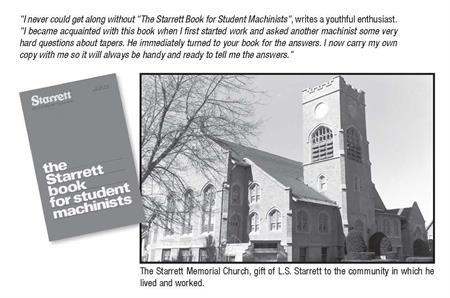
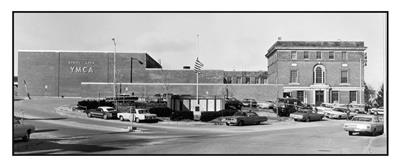
THE STARRETT WAR STORY
"Manufacturers throughout the world are fully aware of the excellence of Starrett Tools, as are countless millions of workers who use them. All know that Starrett has built precision and effectiveness into the weapons of victory. One finds Starrett tools everywhere, helping to make planes, guns, ships, tanks, aerial torpedoes, cameras, detectors, bomb sights, rifles – all the paraphernalia to maintain the balance of power through defense machines and equipment."
In these words Roy F. Williams, Executive Vice President of the Associated Industries of Massachusetts, summed up the Starrett production record during World War II. The occasion was the impressive ceremony at which Starrett received the Army-Navy "E" Production Award. Like all who received the "E" pennant, the Starrett Company looks back on those difficult times with a justifiable pride of accomplishment. A look at the record reveals the following:
Production was stepped up to a scale hitherto unknown in the manufacture of precision tools. Operating schedules were on a round-the-clock basis. A huge new shop was erected which, in spite of its size (500' x 70'), was a marvel of functional effectiveness, being laid out without columns to obstruct light or hinder the smooth flow of production. Output since the beginning of the war multiplied approximately 800 per cent . . . and this without loss or impairment of the traditional Starrett standards of accuracy!
None of this would have been possible without the loyal cooperation of Starrett employees. 444 members of the Starrett organization were on leave of absence to serve in the armed forces. In and out of working hours they outdid themselves in contributing to the war effort. For their record purchases of war bonds, Starrett employees were awarded the Treasury Department War Bond Flag. At a time when it was desperately needed, they purchased and shipped to the front a fully equipped ambulance. Every community drive looked to – and got – the full support of the thousands of men and women who worked at the Starrett plant.
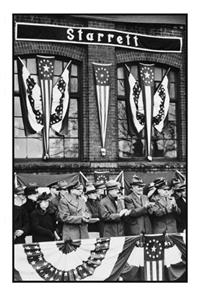
While World War II was the big one in terms of the number of Starrett people who served in the Armed Forces, the support of those at home and the service of those who were in the Armed Forces were outstanding every time our nation has been called to the colors. This includes World War I when we joined our allies to thwart the ambitions of a would-be-dictator; the Korean War when we fought to preserve the integrity of a defenseless nation, although, unfortunately, it was the first war we did not fight to win; and the Vietnam War when we again supported our troops when the government called. Our troops in the field and American manufacturing facilities performed magnificently during the Vietnam War, but without the political will, our efforts to help an underdog nation against totalitarian force came to naught. During the '80s our products were being used in both defense and nondefense industries, and because of this, in the early '90s, we played our part in supporting our troops in defeating the Iraqi dictator who was trying to devour a weaker nation.
During all these times of national crisis, the men and women of the Starrett company did the job.
HURRICANE, HIGH WATER AND HAVOC
Setbacks as well as gains are part of the history of almost every successful enterprise and Starrett has been no exception, as these scenes of physical disaster testify. In 1936 we lost a goodly chunk of one of the main factory buildings when the ice went out on the Millers River. Repairs were made in record time and as the government has since impounded the potential flood waters, we have the satisfaction of knowing this can never happen again.
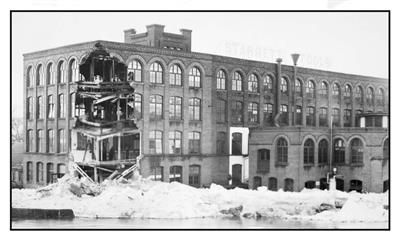
The picture below shows how the "hurricane" of September 1938 hit us. The torrent pouring through the factory is four feet deep, the miniature waterfall in the foreground is the washed out highway. The "high water" mark on the power plant is a grim reminder of ten days when we were without heat or power.
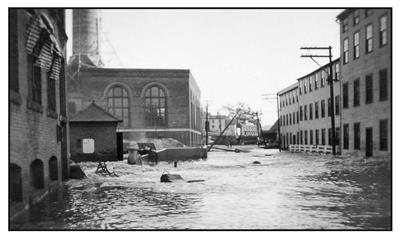
EMPLOYEE PARTICIPATION
Now we think our company is unique, and when people ask us why we can build the best tools in the world, our answer is this. All of us in the company have a real interest in making it successful. Most people who work in the company are a stockholder and approximately one-half of the ownership of the company rests in the hands of present and retired employees. We also have an excellent profit sharing plan–if we satisfy our customers, we all share in the results. If we don't do the job, there is nothing to share. And after we have built these tools, how do we get them to the individual mechanic? Well, we have progressed quite a way in our selling efforts from the days that Laroy Starrett had to work up a demand by himself before hardware dealers would stock his products. We now have an excellent network of industrial distributors all across North America and agents around the world who have represented us for many years. A large measure of our success . . .
We service our international distributors through branch offices and warehouses which are strategically located worldwide.
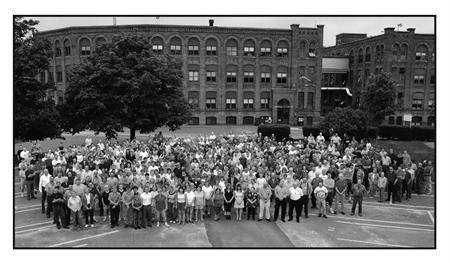
A PRICELESS HERITAGE
Laroy Starrett had the rare quality of being able to instill in others his own enthusiasm for his work. This interest and enthusiasm has been passed down through the years to the veterans of today. In the way that has made New England famous for its generations of craftsmen, many have had the satisfaction of seeing sons and grandsons follow in their footsteps at Starrett. Skill in the art of tool making comes only with long experience. At this writing there are 247 people actively at work who have been with the Starrett Company 25 years or more. At any point in time, between one-third to one-half of the work force has 10 years or more service to their credit.
The influence of L.S. Starrett shaped the destiny of the company that bears his name. He started at a humble station and worked his way to the top. The success of the company paralleled his life and is the result of the work of those men and women associated with him and those men and women who followed in later years.
It has been said that any business is but the lengthened shadow of one man. Mr. Starrett left a heritage of integrity that has been a shining example to all who followed. No business could set itself a higher goal than is expressed by the Starrett Pledge: "We pledge ourselves to protect and carry on the high standards set forth by our founder."
